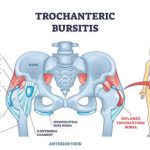1. Introduction to Non-Surgical Eyelift Treatments
As we age, the skin around our eyes begins to lose its elasticity, leading to sagging, fine lines, and wrinkles. While traditional eyelid surgery (blepharoplasty) has been a popular solution for addressing these concerns, many people prefer non-surgical alternatives due to their minimal downtime and lower risk. In this guide, well explore various non-invasive eyelift treatments, their benefits, potential risks, and how they compare to surgical options.
Understanding Non-Surgical Eyelift Options
Non-surgical eyelift treatments use advanced technologies to tighten and rejuvenate the skin without incisions or significant recovery time. These procedures often involve laser treatments, ultrasound therapy, radiofrequency energy, injectables like Botox and fillers, or even specialized skincare products.
Benefits of Non-Surgical Eyelift Treatments
- Minimal Downtime: Most treatments allow patients to resume normal activities immediately.
- No Surgery Required: Avoids the risks associated with anesthesia and surgical complications.
- Gradual, Natural-Looking Results: Many treatments work by stimulating collagen production for progressive improvements.
- Customizable Solutions: Different procedures can be tailored to individual needs and preferences.
Potential Risks and Considerations
- Temporary Results: Unlike surgery, non-invasive treatments may require maintenance sessions.
- Mild Side Effects: Some redness, swelling, or sensitivity may occur depending on the procedure.
- Limited Effectiveness for Severe Sagging: Deep wrinkles or significant skin laxity may not achieve optimal results without surgery.
Comparison: Non-Surgical vs. Surgical Eyelift
| Treatment Type | Procedure Time | Recovery Time | Longevity of Results | Surgical Risks |
|---|---|---|---|---|
| Non-Surgical (Laser, RF, Injectables) | 30-60 minutes | No downtime to a few days | Months to a couple of years | No surgical risks |
| Surgical Blepharoplasty | 1-2 hours | A few weeks | Long-term (10+ years) | Surgical risks present |
This comparison highlights why many individuals opt for non-surgical methods when seeking subtle enhancements without the commitment of surgery. As we dive deeper into specific treatment options in later sections of this guide, youll gain a clearer understanding of which method might be right for you.
2. Popular Non-Surgical Eyelift Methods
Non-surgical eyelift treatments have gained popularity for their ability to refresh and rejuvenate the eye area without requiring invasive procedures. Below, we’ll explore some of the most common and effective options available today.
Botox
Botox is one of the most well-known non-surgical treatments for reducing fine lines and wrinkles around the eyes. It works by temporarily relaxing the muscles that cause crow’s feet and frown lines, creating a smoother and more youthful appearance.
How It Works
A small amount of botulinum toxin is injected into specific areas around the eyes, preventing muscle contractions that lead to wrinkles.
Benefits
- Smooths fine lines and wrinkles
- Quick procedure with minimal downtime
- Results last 3 to 4 months
Dermal Fillers
Dermal fillers help restore lost volume in the under-eye area and brow region, reducing hollowness and sagging while giving a lifted effect.
How It Works
Fillers made from hyaluronic acid are injected into targeted areas to plump up the skin and provide support.
Benefits
- Adds volume to hollow under-eyes
- Lifts sagging skin around the brows
- Results can last 6 to 18 months
Laser Therapy
Laser treatments help improve skin texture, tighten loose skin, and reduce fine lines by stimulating collagen production.
How It Works
A laser device delivers controlled heat energy to the skin, encouraging collagen renewal and tightening.
Benefits
- Tightens skin around the eyes
- Evens out skin tone and texture
- No incisions or injections needed
Ultrasound Treatments (Ultherapy)
This treatment uses ultrasound energy to lift and tighten skin naturally by stimulating deep layers of collagen production.
How It Works
A handheld device delivers focused ultrasound waves beneath the skin’s surface, triggering a natural lifting response over time.
Benefits
- Tightens and lifts drooping eyelids or brows
- No downtime required
- Gradual improvement over several months
Radiofrequency (RF) Skin Tightening
This treatment uses radiofrequency energy to heat deeper layers of the skin, encouraging collagen production and improving elasticity.
How It Works
A device applies RF energy to gently heat the skin, leading to firmer, tighter tissue over time.
Benefits
- Tightens loose skin around the eyes
- Painless with no recovery time needed
- Cumulative results improve with multiple sessions
Treatment Comparison Table
| Treatment Type | Main Benefit | Duration of Results | Pain Level (1-5) | Downtime Required? |
|---|---|---|---|---|
| Botox | Smooths wrinkles & fine lines | 3-4 months | 1-2 (Mild) | No downtime |
| Dermal Fillers | Adds volume & lifts sagging areas | 6-18 months | 2-3 (Mild-Moderate) | No downtime |
| Laser Therapy | Tightens skin & improves texture | A few months to a year* | 2-3 (Mild-Moderate) | Mild redness/swelling for a few days* |
| Ultrasound (Ultherapy) | Lifts & firms naturally over time | Around 1 year* | 2-3 (Mild-Moderate) | No downtime but gradual improvement* |
| RF Skin Tightening | Tightens loose skin & boosts collagen | Cumulative with multiple sessions* | 1-2 (Mild) | No downtime* |
*Results may vary depending on individual skin type and treatment plan.
If youre considering a non-surgical eyelift, these treatments offer excellent options for achieving a refreshed look without surgery. A consultation with an experienced provider can help determine which method is best suited for your needs.

3. Who Is a Good Candidate for Non-Surgical Eyelift?
Non-surgical eyelift treatments offer a great way to refresh and rejuvenate the eye area without the need for invasive surgery. However, not everyone is an ideal candidate for these procedures. Below, we’ll explore the key factors that determine whether a non-surgical eyelift is right for you.
Ideal Candidates for Non-Surgical Eyelift
The best candidates for non-surgical eyelift treatments are individuals who want to improve the appearance of their eyes but prefer to avoid surgery. These treatments work well for people with mild to moderate signs of aging around the eyes, including wrinkles, sagging skin, and volume loss.
Factors to Consider
| Factor | Ideal Candidate |
|---|---|
| Skin Type | Most non-surgical treatments work well on various skin types, but individuals with good skin elasticity often see the best results. |
| Age Considerations | Typically, people in their 30s to 50s benefit most from these treatments since they have early signs of aging that can be effectively addressed without surgery. |
| Eye Concerns | Great for those experiencing mild drooping eyelids, fine lines, dark circles, or under-eye hollows. |
| Expectations | Candidates should have realistic expectations—non-surgical options provide subtle improvements rather than dramatic changes. |
| Health Condition | Good overall health is important. Those with certain medical conditions or allergies may not be suitable candidates for specific procedures. |
Who May Not Be a Good Candidate?
While non-surgical eyelift treatments can be highly effective, they may not be suitable for individuals with severe sagging skin or excessive fat deposits around the eyes. In such cases, a surgical eyelid lift (blepharoplasty) might be a better option. Additionally, people with certain medical conditions, allergies to injectable ingredients, or unrealistic expectations about results may not be ideal candidates.
Consulting with a Professional
If youre unsure whether youre a good candidate for a non-surgical eyelift, its always best to consult with an experienced aesthetic specialist. They can assess your concerns, evaluate your skin condition, and recommend the most appropriate treatment plan tailored to your needs.
4. Expected Results and Recovery Process
When considering a non-surgical eyelift, its important to understand what kind of results you can expect, how long they will last, and what the recovery process looks like. Different treatments offer varying degrees of improvement, longevity, and aftercare requirements.
Expected Results
Non-surgical eyelift treatments aim to reduce sagging, smooth fine lines, and create a more youthful appearance around the eyes. While these procedures cannot replicate the dramatic effects of surgery, they can still provide noticeable enhancements. The extent of improvement depends on the type of treatment used, skin condition, and individual response.
How Long Do Results Last?
The duration of results varies depending on the specific procedure. Some treatments provide temporary improvements that require regular maintenance, while others offer longer-lasting effects. Below is an overview of common non-surgical eyelift options and their expected longevity:
| Treatment | Expected Results | Duration |
|---|---|---|
| BOTOX® | Smooths crow’s feet and lifts brows | 3-4 months |
| Dermal Fillers | Adds volume to hollow areas under the eyes | 6-12 months |
| Ultherapy® (Ultrasound Therapy) | Tightens skin by stimulating collagen production | Up to 1 year or more |
| Plasma Pen (Fibroblast Therapy) | Tightens excess skin and reduces wrinkles | Around 3 years |
| Laser Resurfacing | Smooths texture and improves skin tone | Around 1 year with proper skincare |
Recovery Process and Aftercare
The recovery time for non-surgical eyelifts is generally minimal compared to surgical procedures. However, each treatment has different aftercare requirements:
BOTOX® and Dermal Fillers
- Mild swelling or bruising may occur but usually subsides within a few days.
- Avoid rubbing or massaging the treated area for at least 24 hours.
- No significant downtime; most people resume normal activities immediately.
Ultherapy® and Plasma Pen Treatments
- Mild redness, swelling, or tingling sensation may last for a few days.
- Avoid excessive sun exposure and use sunscreen to protect treated skin.
- Tightening effects continue to improve over several months as collagen rebuilds.
Laser Resurfacing
- Mild peeling and redness may persist for up to a week.
- Avoid direct sunlight and use gentle skincare products during healing.
- The full effect becomes visible as new skin cells regenerate.
If youre considering a non-surgical eyelift, understanding these factors can help set realistic expectations and prepare you for the best possible outcome.
5. Choosing the Right Provider and Treatment
Selecting the right provider and treatment for a non-surgical eyelift is crucial to achieving safe and effective results. With many options available, it’s important to do your research and ask the right questions before making a decision. Here’s what you need to know.
How to Choose a Qualified Practitioner
A skilled and experienced provider can make all the difference in your results. When looking for a practitioner, consider the following:
| Factor | What to Look For |
|---|---|
| Credentials & Certifications | Ensure they are board-certified in dermatology, plastic surgery, or a related field. |
| Experience | Look for a provider with extensive experience in non-surgical eyelift treatments. |
| Before & After Photos | Review their portfolio to assess the quality of their work. |
| Patient Reviews | Read testimonials and reviews on independent platforms. |
| Consultation Approach | A good provider will take time to answer your questions and set realistic expectations. |
Factors to Consider When Choosing a Treatment
The best non-surgical eyelift option depends on several factors, including your aesthetic goals, skin type, and budget. Consider the following when selecting a treatment:
- Your Desired Results: Do you want subtle rejuvenation or more dramatic lifting?
- Treatment Longevity: Some procedures last longer than others—consider how often you’re willing to maintain results.
- Pain & Downtime: Certain treatments may have mild discomfort or require recovery time.
- Your Budget: Non-surgical treatments vary in cost, so choose one that fits within your financial plan.
- Pretreatment Requirements: Some procedures may require specific skincare prep or downtime after treatment.
Questions to Ask During Your Consultation
A consultation is the perfect opportunity to gather information and ensure youre making an informed decision. Here are key questions to ask your provider:
- What experience do you have with this specific procedure?
- What results can I realistically expect?
- Are there any risks or side effects I should be aware of?
- How long will the results last?
- What is the recovery process like?
- How much does the procedure cost, and are there any additional fees?
- If I’m not happy with my results, what are my options?
The Importance of Feeling Comfortable with Your Provider
You should feel confident and comfortable with your chosen practitioner. Trust your instincts—if something feels off during the consultation, don’t hesitate to seek another opinion. A reputable provider will prioritize your concerns, provide honest recommendations, and never pressure you into a procedure.
Selecting the right provider and treatment takes time, but doing thorough research ensures you achieve natural-looking, satisfying results while minimizing risks.


